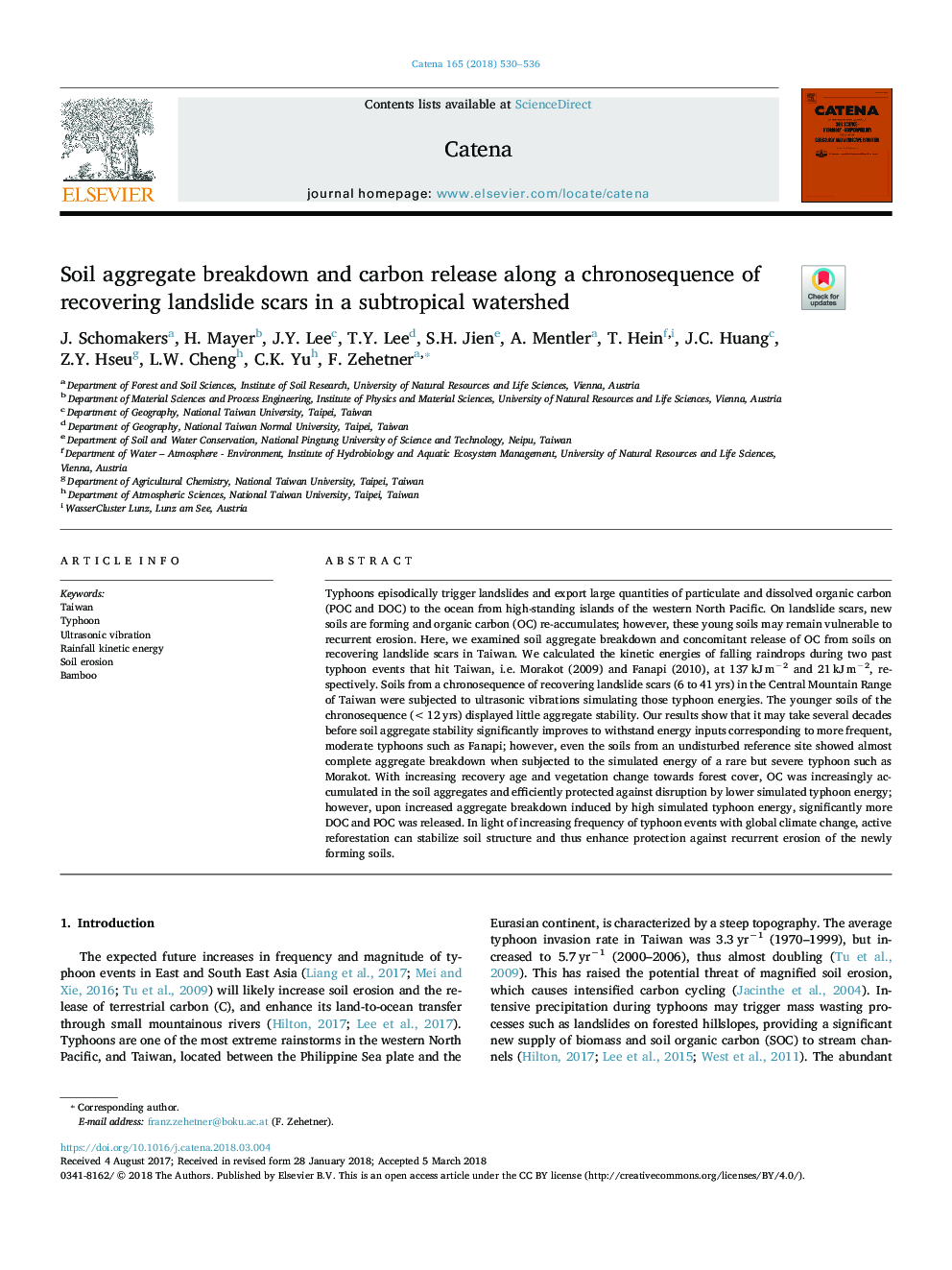| Article ID | Journal | Published Year | Pages | File Type |
|---|---|---|---|---|
| 8893634 | CATENA | 2018 | 7 Pages |
Abstract
Typhoons episodically trigger landslides and export large quantities of particulate and dissolved organic carbon (POC and DOC) to the ocean from high-standing islands of the western North Pacific. On landslide scars, new soils are forming and organic carbon (OC) re-accumulates; however, these young soils may remain vulnerable to recurrent erosion. Here, we examined soil aggregate breakdown and concomitant release of OC from soils on recovering landslide scars in Taiwan. We calculated the kinetic energies of falling raindrops during two past typhoon events that hit Taiwan, i.e. Morakot (2009) and Fanapi (2010), at 137â¯kJâ¯mâ2 and 21â¯kJâ¯mâ2, respectively. Soils from a chronosequence of recovering landslide scars (6 to 41â¯yrs) in the Central Mountain Range of Taiwan were subjected to ultrasonic vibrations simulating those typhoon energies. The younger soils of the chronosequence (<12â¯yrs) displayed little aggregate stability. Our results show that it may take several decades before soil aggregate stability significantly improves to withstand energy inputs corresponding to more frequent, moderate typhoons such as Fanapi; however, even the soils from an undisturbed reference site showed almost complete aggregate breakdown when subjected to the simulated energy of a rare but severe typhoon such as Morakot. With increasing recovery age and vegetation change towards forest cover, OC was increasingly accumulated in the soil aggregates and efficiently protected against disruption by lower simulated typhoon energy; however, upon increased aggregate breakdown induced by high simulated typhoon energy, significantly more DOC and POC was released. In light of increasing frequency of typhoon events with global climate change, active reforestation can stabilize soil structure and thus enhance protection against recurrent erosion of the newly forming soils.
Related Topics
Physical Sciences and Engineering
Earth and Planetary Sciences
Earth-Surface Processes
Authors
J. Schomakers, H. Mayer, J.Y. Lee, T.Y. Lee, S.H. Jien, A. Mentler, T. Hein, J.C. Huang, Z.Y. Hseu, L.W. Cheng, C.K. Yu, F. Zehetner,
